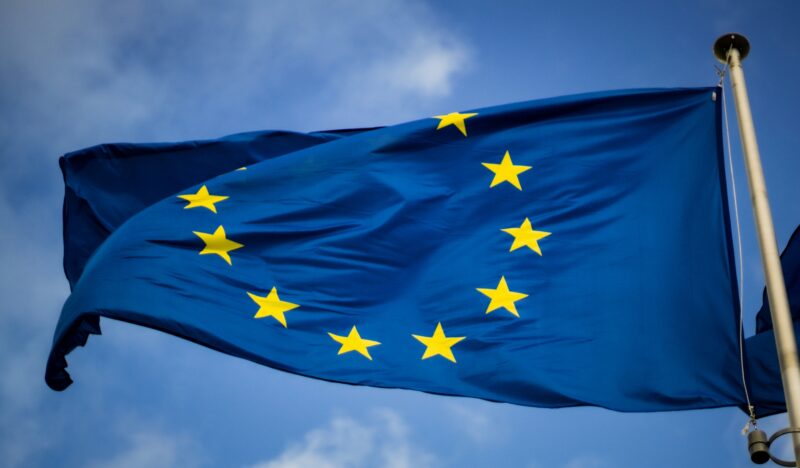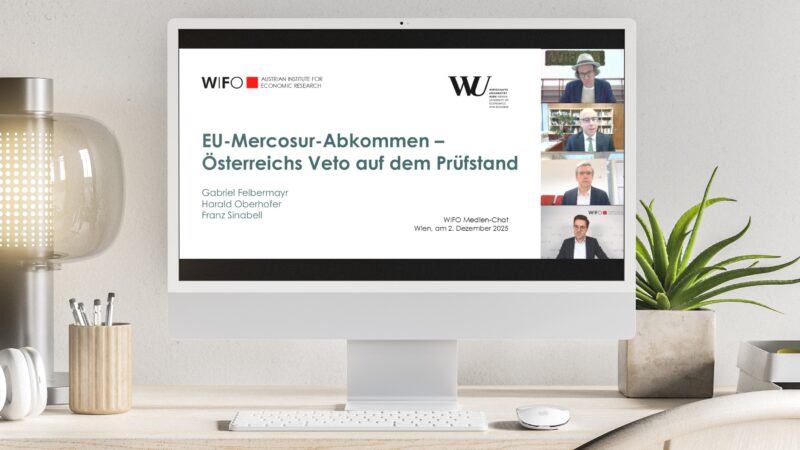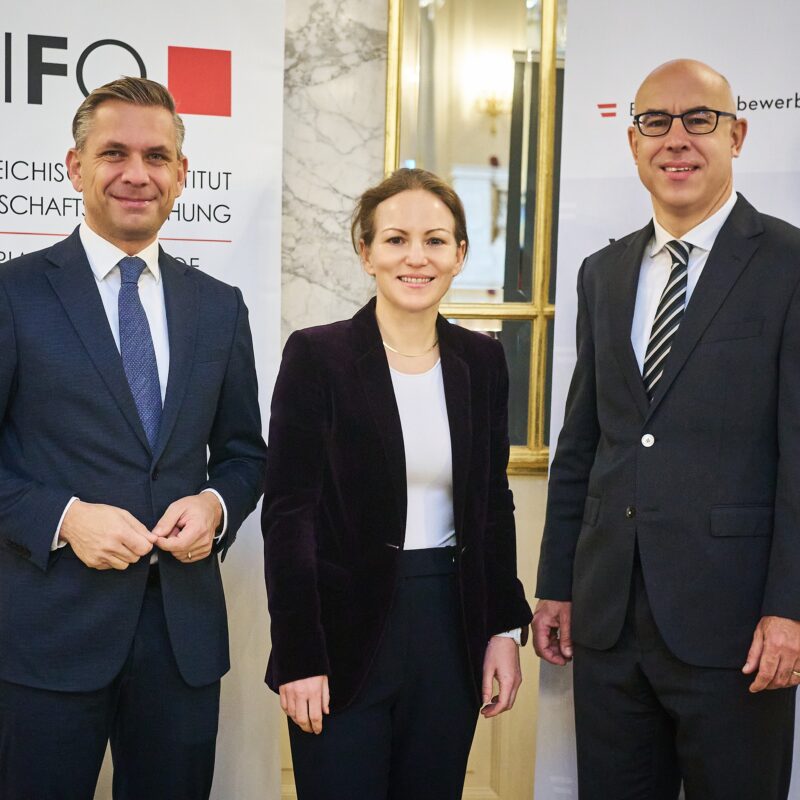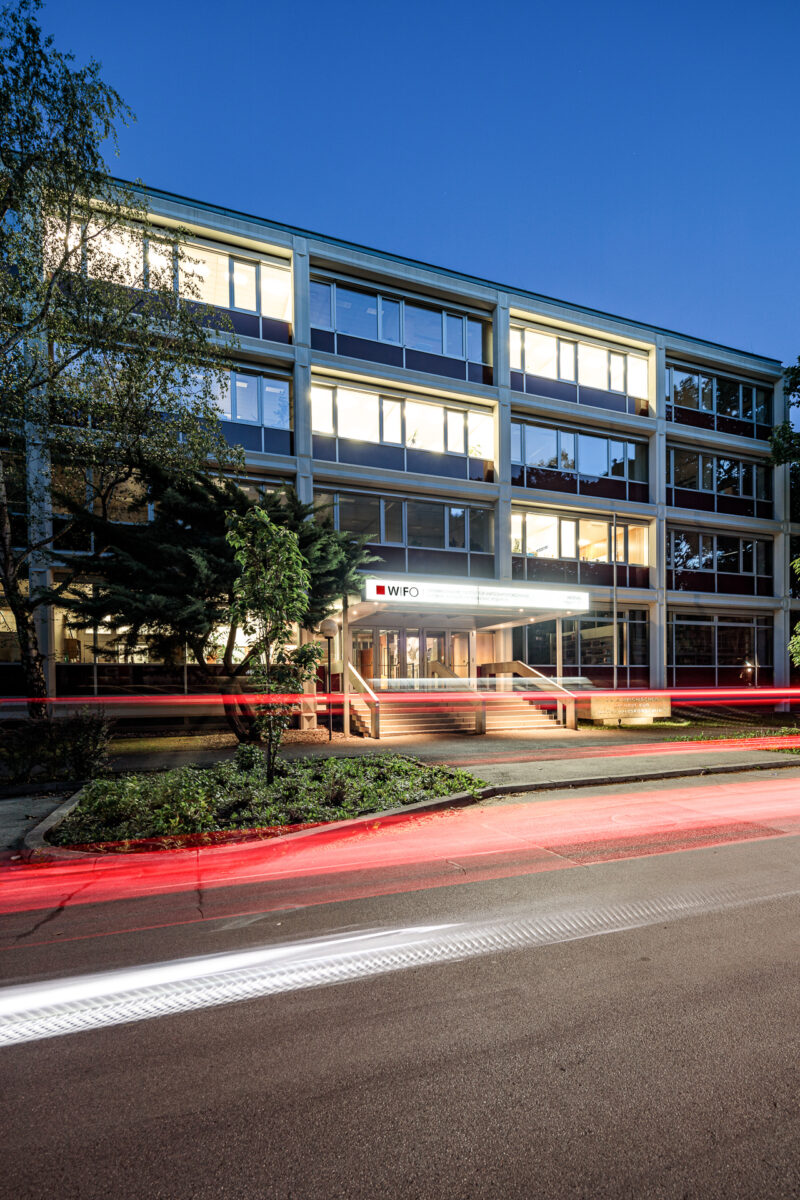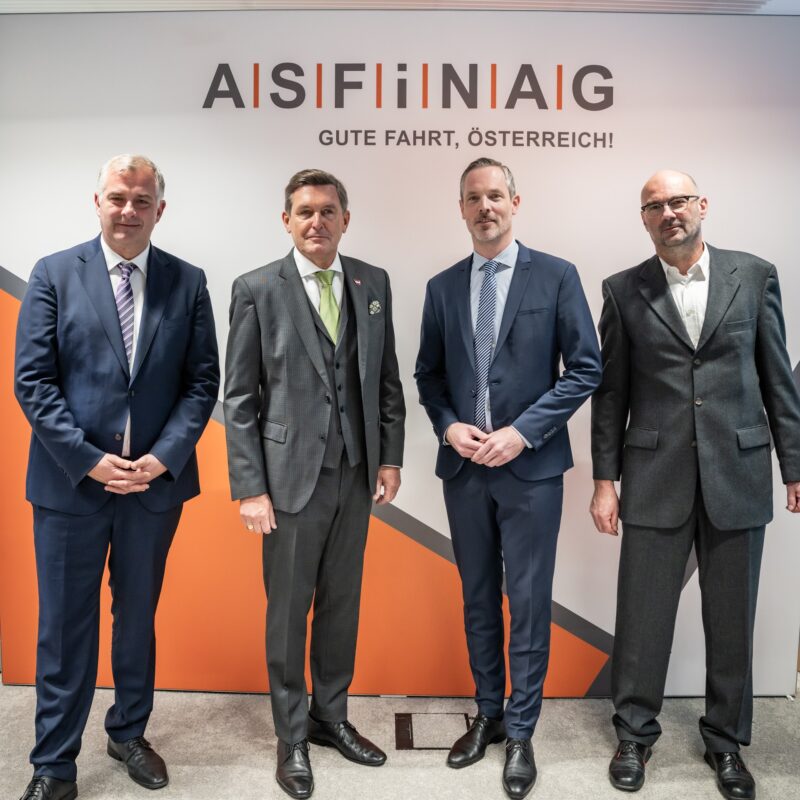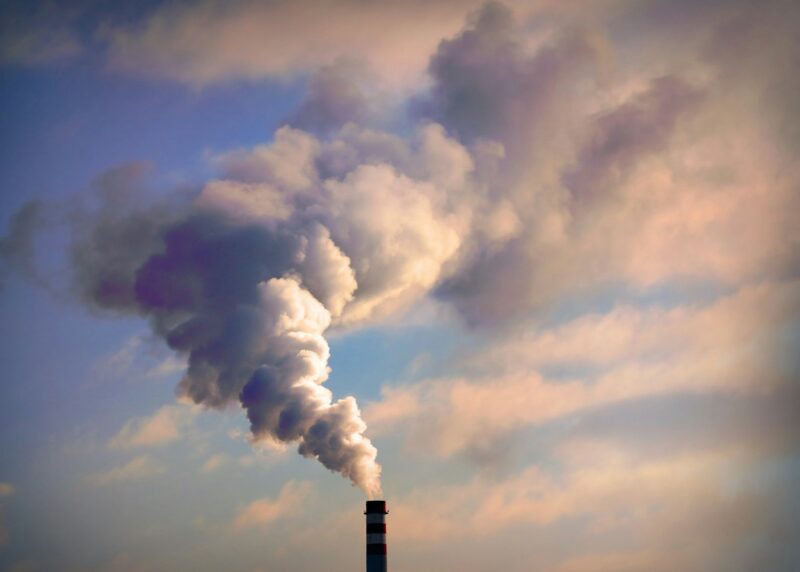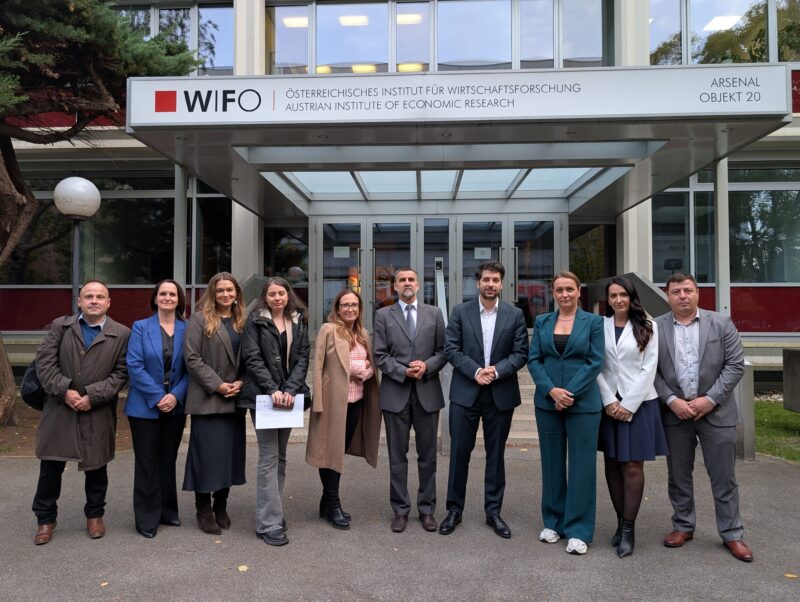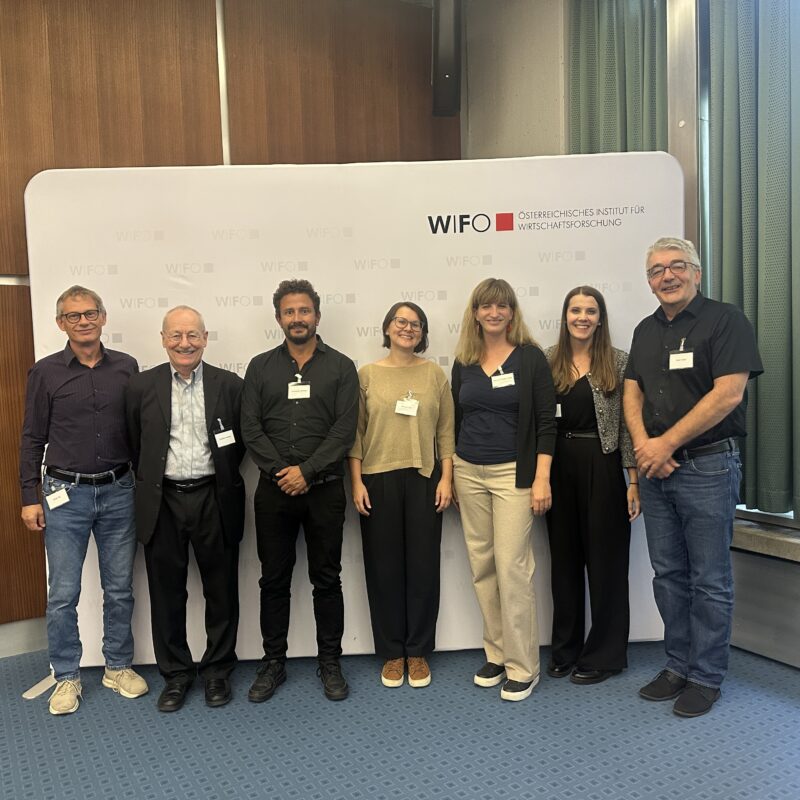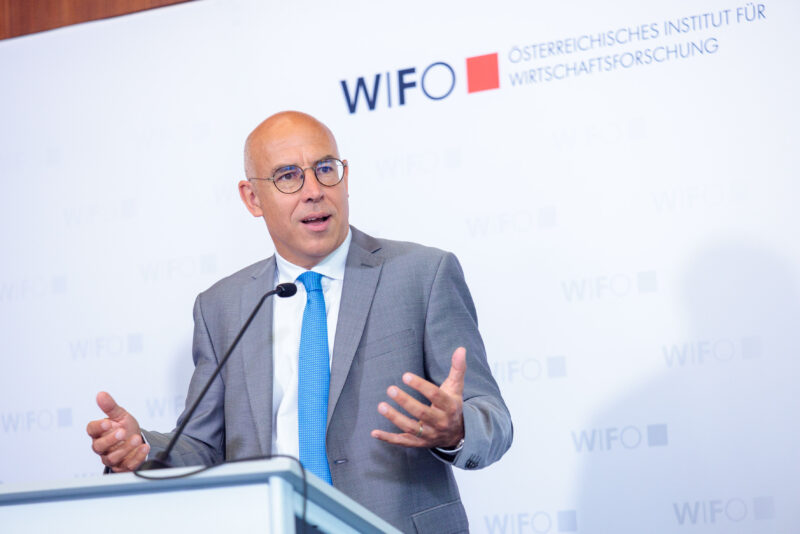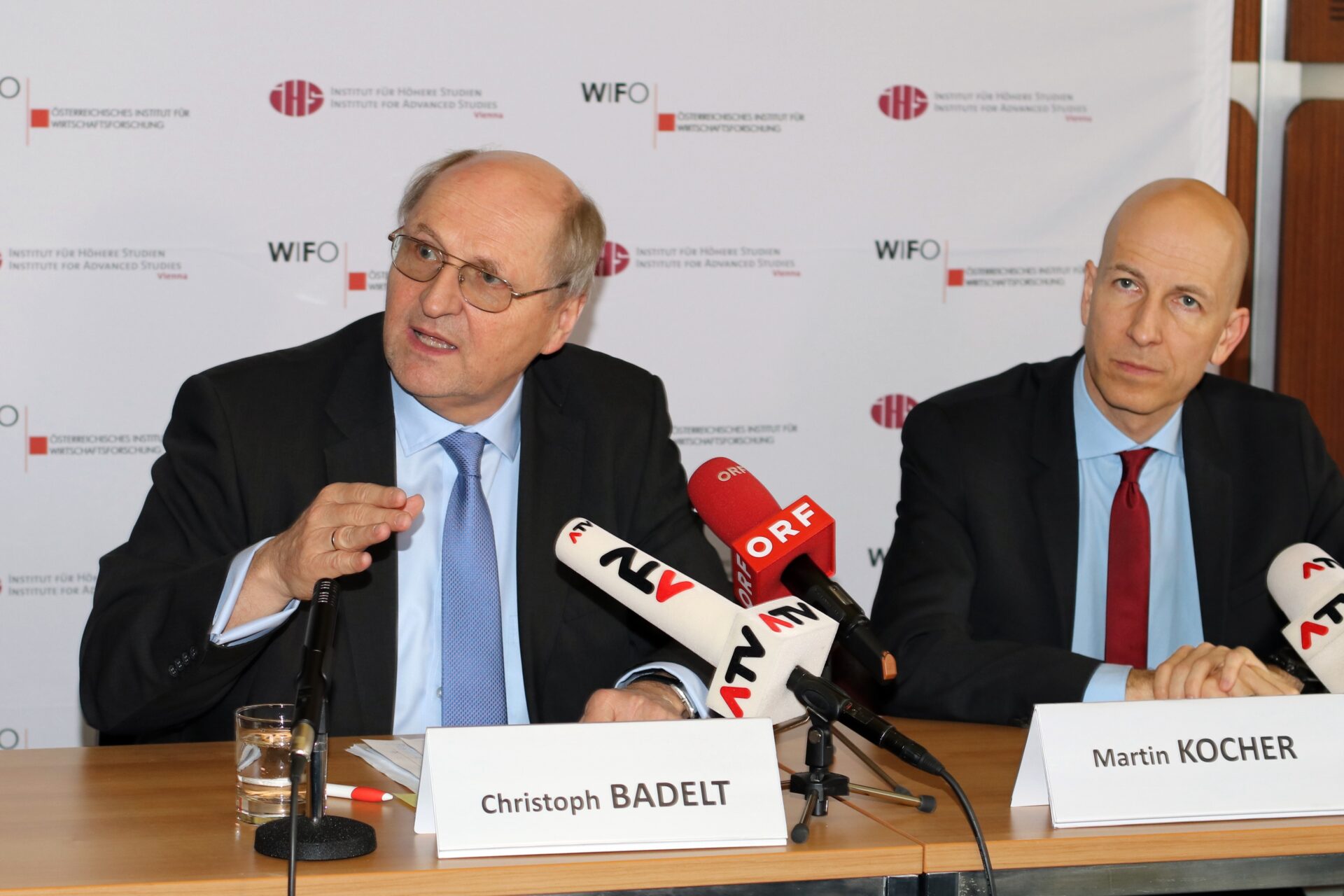
24.03.2017
Economic Outlook for 2017 and 2018: Business Cycle Upswing in Austria
Apart from lively internal demand, foreign trade will rebound and contribute more strongly to GDP growth than in recent months.
From a rate of growth of 1.5 percent in 2016, demand and output in Austria are expected to accelerate significantly in 2017 and 2018. Leading indicators clearly suggest a further strengthening of business activity. In this environment, the Austrian economy is expected to expand by 2.0 percent in the current year and 1.8 percent in 2018.
Austria's economy is enjoying a period of cyclical upswing. Support comes from domestic demand, driven by favourable labour market developments. Exports pick up in step with strengthening aggregate demand on foreign markets. Growth of the US economy is set to edge up notably in 2017, while activity in the euro area should stay on a firm upward path. With prices for raw materials rising on world markets, growth in commodity-exporting countries should regain momentum. Hence, exports should provide a distinctly stronger contribution to Austria's GDP growth than in recent periods, thereby supporting the healthy pace of domestic demand forces.
In this environment of a broad-based upward trend across demand components on the one hand and production across sectors on the other, business activity in Austria is bound to gather momentum. The favourable signs from forward-looking indicators also confirm the prospect of a sustained cyclical upturn over the entire forecast horizon. In the event, real GDP will gain 2.0 percent in the current year and 1.8 percent in 2018, exceeding in both years the rate of potential output growth. While overall productive capacity will likely be extended with the increase in demand and output, the output gap will still be negative by the end of 2018. The implicit dampening impact on inflation should nevertheless ebb and upward pressure on prices may gradually mount. After an annual increase of 0.9 percent in 2016, the consumer price index (CPI) is projected to climb by 1.7 percent each in 2017 and 2018. Oil price volatility remains a risk, notably for the inflation outlook, which is nevertheless deemed balanced, much as the risks to the overall growth forecast.Public finances stand to benefit from lively economic activity and lower debt service cost, but the improvement in the fiscal balance is held back by a moderately expansionary policy stance. As the latter will gradually abate, 2017 and 2018 should see steady progress in deficit reduction. While the cyclical upswing will stimulate employment growth, the sustained expansion of labour supply will allow the jobless rate to fall only slightly this year and no further in 2018.
In this environment of a broad-based upward trend across demand components on the one hand and production across sectors on the other, business activity in Austria is bound to gather momentum. The favourable signs from forward-looking indicators also confirm the prospect of a sustained cyclical upturn over the entire forecast horizon. In the event, real GDP will gain 2.0 percent in the current year and 1.8 percent in 2018, exceeding in both years the rate of potential output growth. While overall productive capacity will likely be extended with the increase in demand and output, the output gap will still be negative by the end of 2018. The implicit dampening impact on inflation should nevertheless ebb and upward pressure on prices may gradually mount. After an annual increase of 0.9 percent in 2016, the consumer price index (CPI) is projected to climb by 1.7 percent each in 2017 and 2018. Oil price volatility remains a risk, notably for the inflation outlook, which is nevertheless deemed balanced, much as the risks to the overall growth forecast.Public finances stand to benefit from lively economic activity and lower debt service cost, but the improvement in the fiscal balance is held back by a moderately expansionary policy stance. As the latter will gradually abate, 2017 and 2018 should see steady progress in deficit reduction. While the cyclical upswing will stimulate employment growth, the sustained expansion of labour supply will allow the jobless rate to fall only slightly this year and no further in 2018.
Further news
Aviso: Press Conference on 18 December 2025
05.12.2025
Association of European Economic Research Institutes Publishes General Report
04.12.2025
Legal Framework, Cost Analysis and Climate Impacts for Heating and Cooling in Austria
02.12.2025
WIFO Media Chat: Austria's Veto Under Scrutiny
02.12.2025
WIFO and Standard Present Christmas Inflation Calculator
01.12.2025
This was the Third Conference Organised by WIFO and BWB
28.11.2025
Results of the WIFO-Konjunkturtest (Business Cycle Survey) of November 2025
27.11.2025
ASCII and RETHINK-GSC in Sarajevo Recognised as Lighthouse Projects
26.11.2025
WWWI: Calendar Weeks 40 to 46 2025
25.11.2025
Invitation to WIFO Media Chat
24.11.2025
WIFO Research Brief Examines Bill Currently Under Review
18.11.2025
Study by WIFO and Eco Austria Presented
13.11.2025
Retail Business Cycle Report in Cooperation with the Austrian Retail Association
07.11.2025
On Average, Women Still Have Significantly Longer Career Breaks than Men
05.11.2025
Results of the WIFO-Konjunkturtest (Business Cycle Survey) of October 2025
31.10.2025
He was Vice-President of the Austrian Institute of Economic Research from 1990 to 2008
27.10.2025
Video: Research Seminar by Harald Fadinger
22.10.2025
WWWI: Calendar Weeks 32 to 41 2025
21.10.2025
Update of the FIW Annual Report 2025
20.10.2025
Exchange with Bulgarian Journalists on Austria's Experience in the Euro Area
15.10.2025
WIFO Research Brief Delivers Detailed Insights
10.10.2025
Videos: Research Seminars with Gabriel Ahlfeldt and Stefanie Peer
10.10.2025
Economic Outlook for 2025 and 2026
07.10.2025


